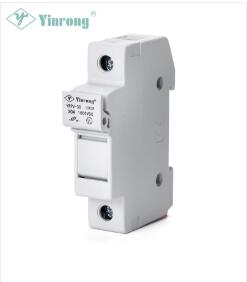Where do you put the PV fuse?
2024-05-23
PV fuses are essential for protecting photovoltaic (PV) systems from overcurrent conditions, and they need to be placed strategically to ensure effective protection. Here’s a detailed guide on where to put the PV fuses:

Placement of PV Fuses
1. String Level Protection:
- String Fuses: Each string of solar panels should be protected with a fuse. These fuses are typically placed in the positive and sometimes the negative conductor of each string before they combine in the combiner box. String fuses prevent overcurrent from one string affecting the others.
- Combiner Box: Inside the combiner box, each string input is connected through a fuse. This is one of the most common locations for string-level PV fuses.
2. Combiner Box Protection:
- Input Protection: As mentioned, fuses in the combiner box protect each string input. These fuses are crucial in preventing fault currents from propagating through the system.
- Output Protection: Depending on the design and requirements, there may also be fuses on the output side of the combiner box, protecting the main DC bus that feeds into the inverter.
3. Inverter Protection:
- Inverter DC Input: Fuses can be placed on the DC input side of the inverter. These fuses protect the inverter from overcurrent conditions that could damage its internal components.
- Integrated Inverter Protection: Some inverters have built-in fuses or overcurrent protection devices, so additional external fuses may not be necessary.
4. Array Junction Box:
- Array-Level Fuses: For larger systems, an array junction box may be used to consolidate multiple combiner boxes. Fuses at this level protect against overcurrent conditions affecting the entire array.
5. Battery Systems (for PV Systems with Storage):
- Battery Connection: If the PV system includes battery storage, fuses should be placed in the conductors connecting the solar array to the battery to protect against overcurrent conditions that could damage the batteries or wiring.
Best Practices for PV Fuse Placement
- Accessibility: Ensure that fuses are placed in locations that are easily accessible for inspection, maintenance, and replacement.
- Environment: Use fuses and fuse holders that are rated for outdoor use if placed in external environments, and ensure they are housed in weatherproof enclosures.
- Sizing: Properly size the fuses according to the current ratings of the PV strings and the system’s voltage to provide effective protection without nuisance tripping.
- Standards Compliance: Follow industry standards and local electrical codes (such as the National Electrical Code (NEC) in the U.S.) for the placement and sizing of PV fuses.
- Thermal Management: Consider the heat generated by fuses and ensure adequate ventilation or cooling to prevent overheating, especially in high-power systems.
Conclusion
PV fuses are crucial for safeguarding the photovoltaic system from overcurrent and ensuring safe operation. They should be strategically placed at the string level, within combiner boxes, at the inverter inputs, and possibly at the array level or battery connections. Proper placement, sizing, and adherence to standards are essential to maximize protection and maintain system reliability.


